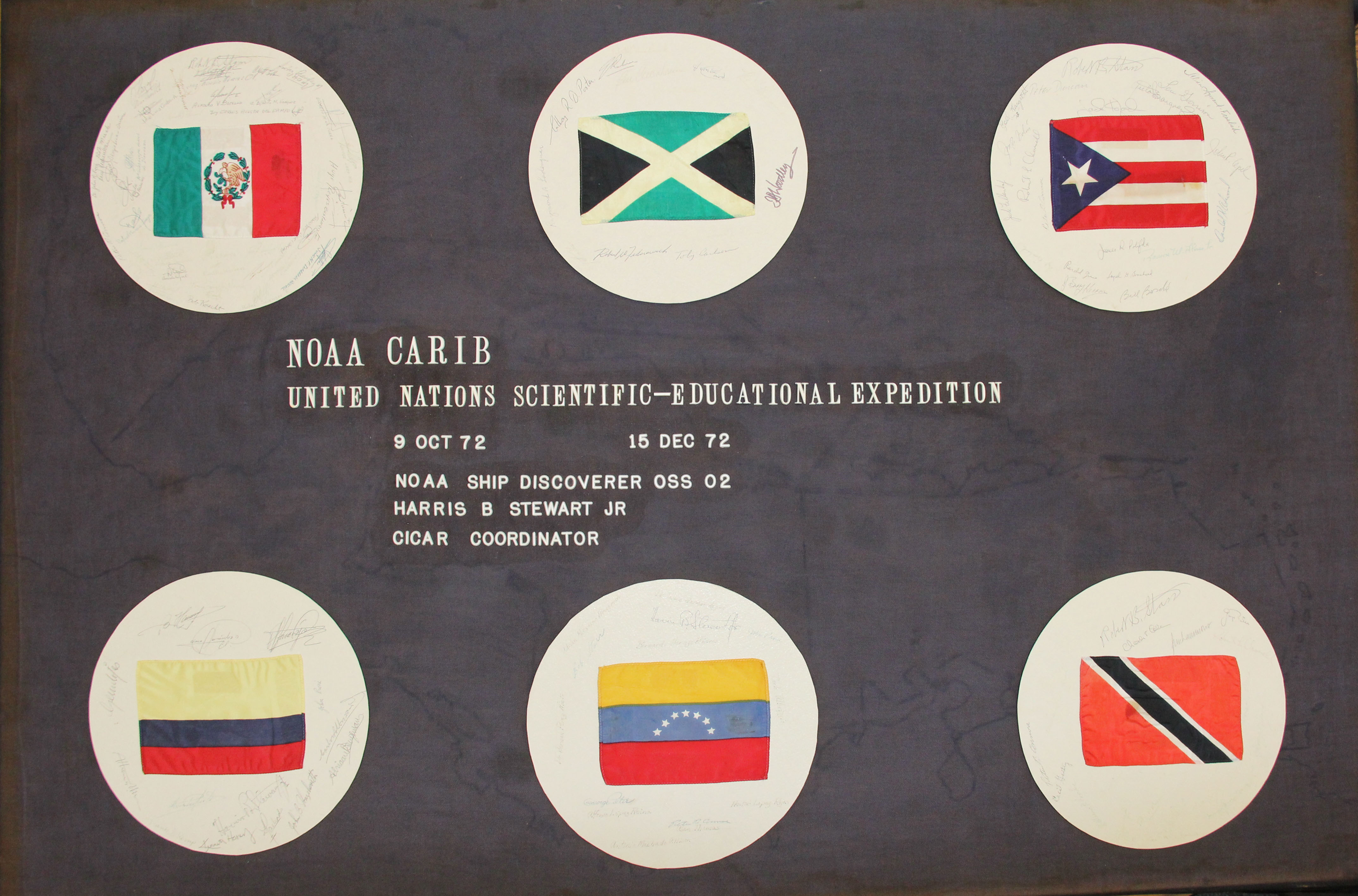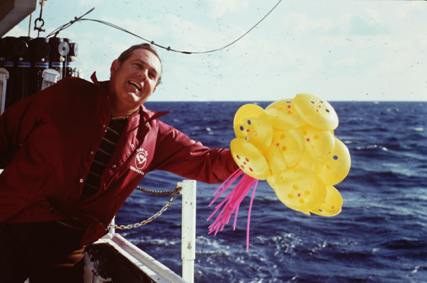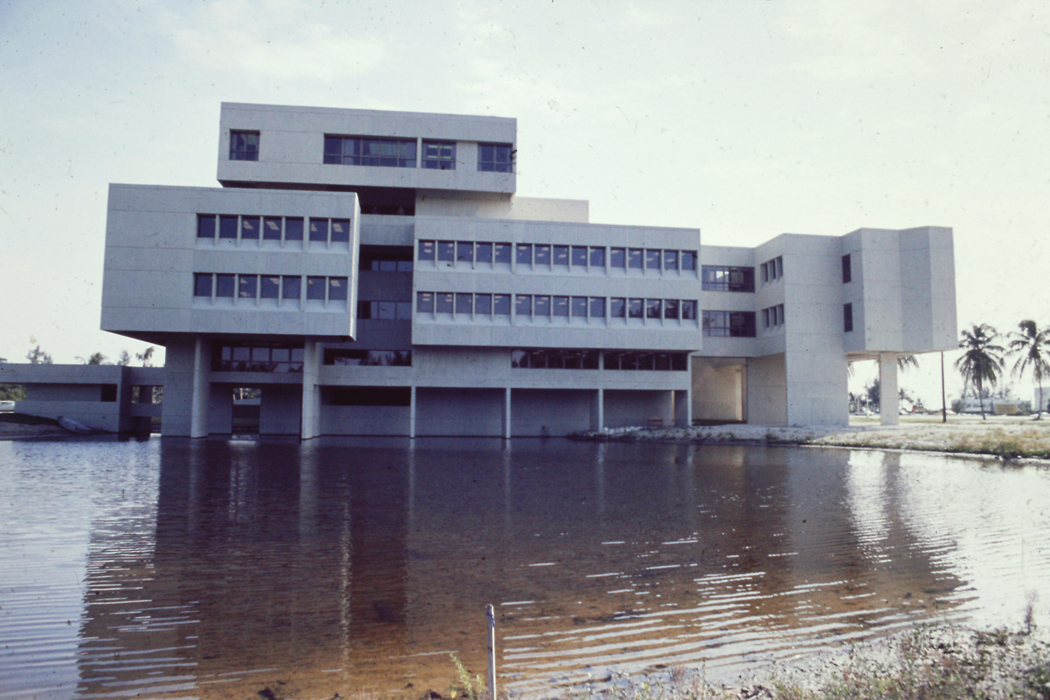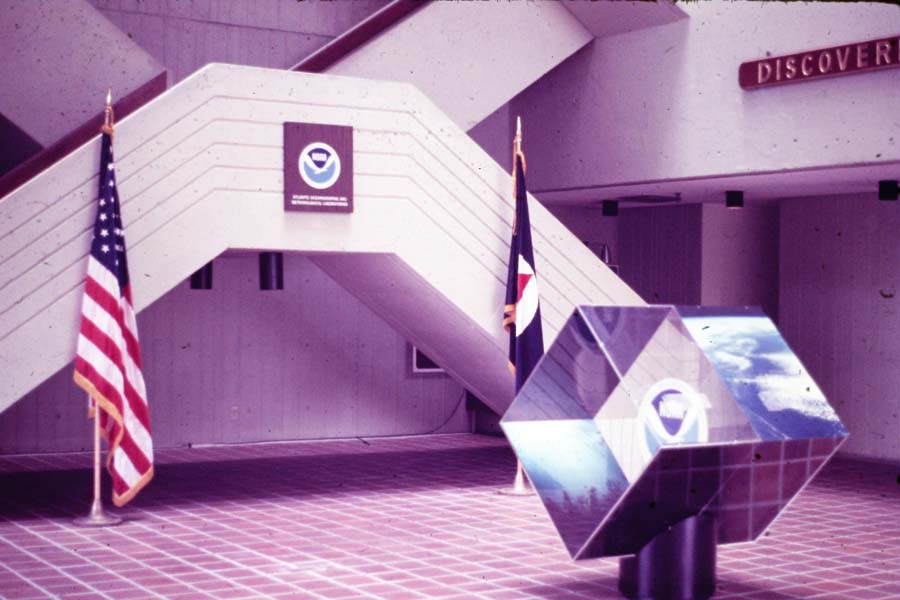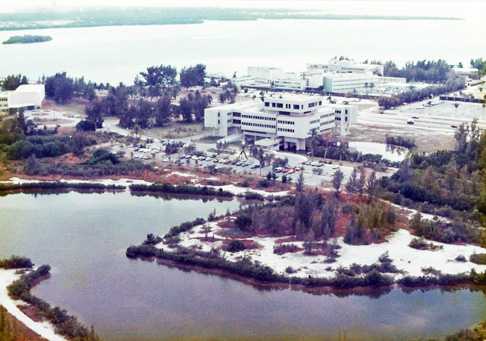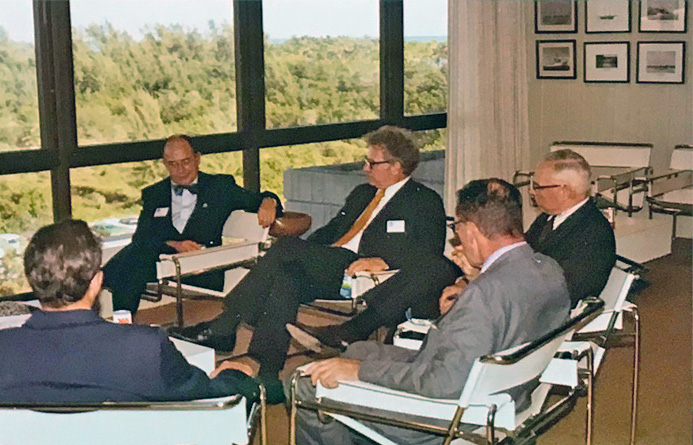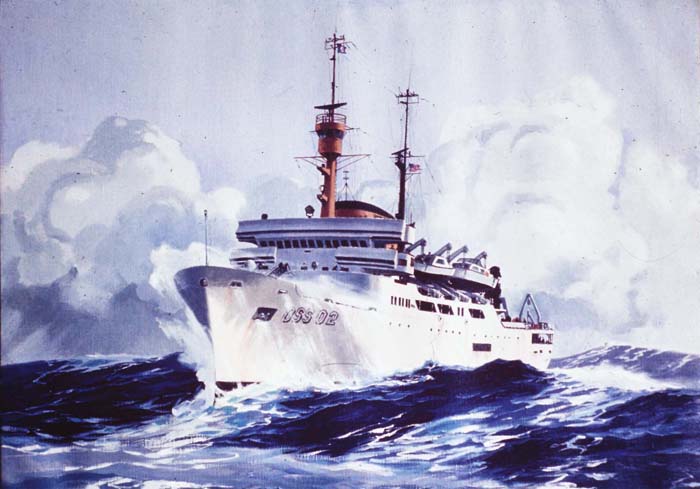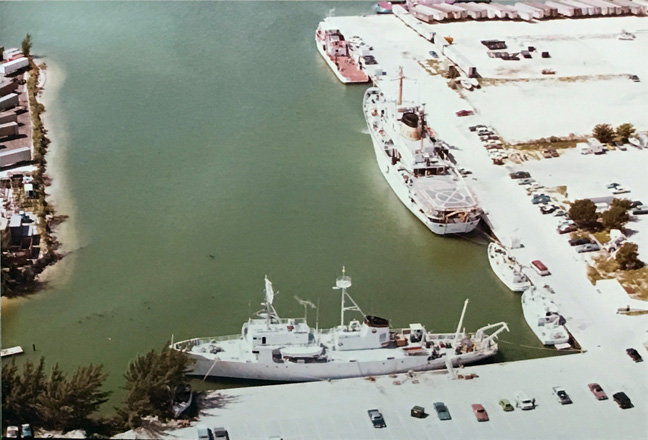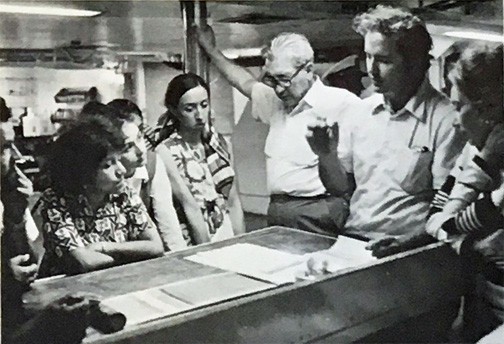AOML's First 10 Years...just a previewIn the fall of 2018, AOML will release our passion project, led by several dedicated retired employees, which is all about the first ten years of this facility. From the construction, to our first director, to the research cruises in the Caribbean and beyond, the history paints a picture of the pioneers who founded AOML. Below is a preview of some of the intersting things we've uncovered from our first 10 years as an organization. Commemorative display of the NOAA CARIB United Nations Scientific Educational Expedition, on the NOAA Ship Discoverer. The flags of the participating countries (Mexico, Jamaica, Puerto Rico, Coloumbia, Venezula, and Trinidad and Tabago) were signed by the scientists of those nations. (1972)
Soxhlet sediment extraction apparatus set up in the chemistry lab for an open house. (1970's)
NOAA ships VIRGINIA KEY and RESEARCHER. Port of Miami. (1976)
Surface drifters released by Ben Culverhouse (AOML/Physical Oceanography) from RESEARCHER. (1975)
George A. Berberian (AOML/Ocean Chemistry) with the Tecnicon Nutrient Auto Analyzer. (1981)
Cover image showing the AOML facilty from the George A. Berberian Collection (1972).
The lobby (Adriana Y. Cantillo Collection, mid 1970s). The location is unknown of this beautiful central prism piece.
The stereo deep-sea camera used during the exploration of the TAG hydrothermal field (Mid Atlantic Ridge) (Charles A. Lauter Collection, 1971). The presence of "black smokers" was detected by the thermal sensors attached to the sled.
Aerial image of AOML showing the lagoon and water channels.
Robert S. Dietz (world-known geologist) in the fourth floor on AOML inauguration day. (Harris B. Stewart Collection, February 3, 1973) Robert S. Dietz (AOML/MGGL) and John C. Holden (AOML/MGGL) reconstructed the single, primeval super continent, Pangaea, that existed 200 million years ago and its dispersion into the present-day land masses based on plate tectonics and sea-floor spreading. Three geologic formations are named in his honor: Dietz Bluff in Antarctica; a tablemount (guyot) in the Pacific and an asteroid (#4666 Dietz).
The NOAA ship DISCOVERER Underway by Jack Coggins (Harris B. Stewart Collection, 1969). This is one of several paintings and drawings commissioned by Stewart. The painting and several other oils, watercolors and drawings were on display at AOML Upon Stewart's his retirement the art work passed on to Stewart's family. Stewart took the artist on a cruise aboard the DISCO so he could get ideas for the art work. Stewart donated two art pieces to AOML. They are in the fifth floor conference room.
The ship basin at Dodge Island (Harris B. Stewart Collection 1970s) Left to right: R/V COLUMBUS ISELIN (University of Miami), R/V GERDA (University of Miami), NOAA ship VIRGINIA KEY and NOAA ship RESEARCHER. View is towards the south. The base no longer exists.
Inauguration of the NOAA Ship Base at Dodge Island (Harris B. Stewart Collection, September 2, 1971). Robert M. White (first NOAA Administrator) is second from right. The NOAA ship RESEARCHER, one of the three Class 1 ships at that time, is to the left. The old Rickenbacker Bridge joining Virginia Key to the mainland is on the horizon.
John R. Proni (AOML/ORSL-OAD) explaining underwater soundings to university students aboard the NOAA ship DISCOVERER during CICAR. |
Research Divisions
Quick Links
Tools & Resources
Employee Tools
Stay Connected
|

